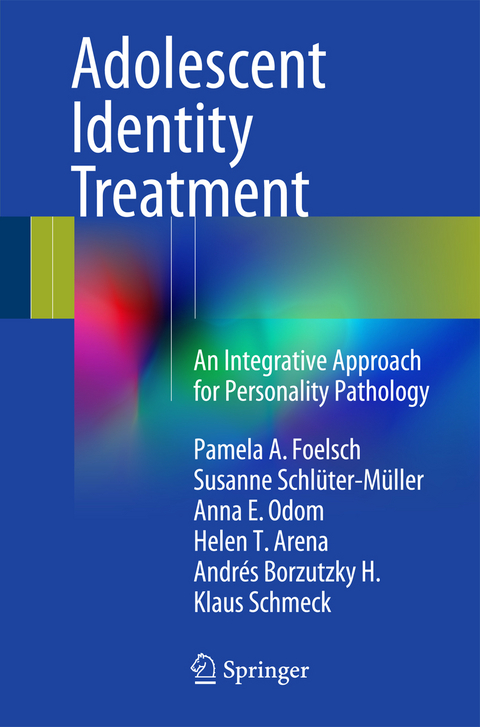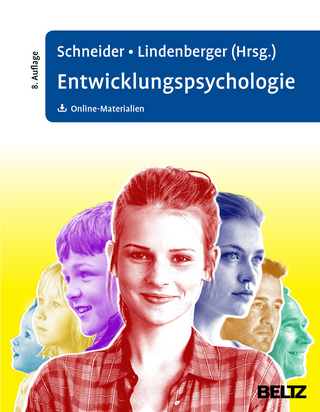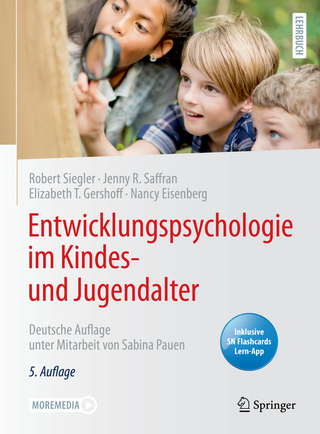Adolescent Identity Treatment
Springer International Publishing (Verlag)
978-3-319-06867-1 (ISBN)
- Comprehensive treatment in a new and developing area of mental healthcare
- Integrative approach to adolescent difficulties, drawing from family systems, attachment, developmental neurobiology, object relations, and cognitive-behavioral theories and techniques
- Offers extensive clinical examples and concrete interventions, with phase-specific treatment components
- Written by an international group of experts in the fields of psychotherapy, personality pathology, and adolescent development
Adolescent Identity Treatment: An Integrative Approach for Personality Pathology is a ground breaking title that provides general and specific clinical strategies to help adolescents who lack an integrated identity.
The authors have developed a treatment based on the integration of object relations theory, family systems, attachment, developmental neurobiology and cognitive behavioral approaches that focuses on clearing blockages to normal identity development and adaptive functioning.
While most adolescents build satisfying interpersonal relationships, are successful in school and work and begin romantic relationships, there is a minority of adolescents who do not succeed in this and are at a high risk of developing problems in school, work and relationships, problems with affect regulation as well as engaging in a wide range of self-destructive behaviors.
In addition to a description of the disorder and assessment, this manual offers extensive clinical examples and concrete interventions, with phase-specific treatment components, including a clear treatment frame, psychoeducation, environmental interventions (with a "Home Plan" that addresses self-care behaviors, responsibilities and improved boundaries that fosters the development of better relationships between the adolescent and family) and parenting strategies, all in the service of creating a space for the individual work with the adolescent.
Pamela A. Foelsch, PhD Weill Cornell Medical College, New York-Presbyterian Hospital, Harrison, NY, USA
Prof. Dr. Klaus Schmeck Psychiatric University Hospitals, Basel, Switzerland
Andrés H. Borzutzky Instituto Médico Schilkrut, Santiago, Las Condes, Chile
Helen T. Arena, PhD Weill Cornell Medical College, New York-Presbyterian Hospital, White Plains, NY, USA
Anna E. Odom, PhD Weill Cornell Medical College, New York-Presbyterian Hospital, White Plains, NY, USA
Dr. Susanne Schlüter-Müller Practice for Child- and Adolescent Psychiatry and Psychotherapy, Frankfurt, Germany Psychiatric University Hospitals, Basel, Switzerland
1 Introduction
2 Description of the Disorder
2.1 Terminology and Definition
2.1.2 Definition of Personality Disorders according to DSM--‐IV--‐TR
2.1.3 Transition to DS
M2.2 Epidemiology
2.3 Course and Prognosis
2.4 Diagnostic Procedures and Differential Diagnosis
3 Theoretical Models and Rationale
3.1 Models of the Disorder
3.2 Neurobiological Vulnerability
3.3 Sequence of Growth and Implications for Continued Development
3.4 Theory Underlying the Individual Psychotherapy
3.4.1 Object Relation Theory
3.4.2 Developmental Theory
3.4.3 Identity
3.5 Theory Underlying the Environmental Interventions
4 Diagnosis and Treatment Indications
4.1 Structure and Process of the Initial Patient Contact
4.2 Diagnostic Process
4.3 Diagnostic Procedures and Interviews
4.3.1 Psychiatric Diagnosis
4.3.2 Structural Diagnosis
4.3.3 Identity Assessment
4.3.4 Standard Assessment Battery Recommendations
4.4 Treatment Indications and Contraindications
4.4.1 Indications for Adjunctive Treatment
4.4.2 Treatment Refusal
4.4.3 Treatment Contraindications
5 Treatment
5.1 Aims and Goals
5.1.1 Specific Aim
5.1.2 Planting seeds
5.2 Therapist Variables, Stance, and Attitudes
5.2.1 Considerations….the air within which the treatment thrives
5.2.2 Therapist Characteristics and Attitudes
5.2.3 Therapist Stance
5.2.4 Maintaining Objectivity
5.3 Preparatory Phase and Education
5.3.1 Confidentiality
5.3.2 Shift in Family Dynamic
5.3.3 Treatment Limitations
5.3.4 Role of Family in Treatment
5.3.5 Psychoeducation
5.3.6 Factors that may contribute to treatment interruptions
5.3.7 General Parenting Strategies
5.3.8 Tasks of Adolescence
5.4 Contract Setting
5.4.1 Contracting Phase
5.4.2 Individual Contract
5.4.3 Family Contract
5.4.4 Threats to Treatment
5.5. Strategies for the Treatment
5.5.1 Session Frequency: Individual and Parent/Family
5.5.2 Length of Treatment
5.5.3 Direct Interventions
5.5.4 Dual Treatment Focus: Acute/Focal and Long--‐Term (Structural Change)
5.5.5 Patient Driven versus Model Driven
5.6 Tactics
5.6.1 Maintaining the Treatment Frame
5.6.2 Selecting the Dominant Affect
5.6.3 Regulating Affect in Sessions
5.6.4 Intervention: Tactics
5.6.5 Transference and Countertransference
5.6.6 Modification of Transference Analysis with Adolescents
5.7 Techniques
5.7.1 Channels of Communication
5.7.2 Clarification
5.7.3 The Process of Clarification with Adolescents
5.7.4 Confrontation
5.7.5 InterpretationSummary of Adolescent Specific Techniques
5.8 Working with the Families
5.8.1 Practical issues around treatment
5.8.2 Parent strategy for tolerating negative affect
5.9 Direct Environmental Interventions
5.9.1 Home Plan
5.9.2 Additional Direct Environmental Interventions
5.10 Adjunctive Psychopharmacological Treatment
5.11 AIT Summary
6 Adolescent Identity Treatment (AIT) Case Illustration
6.1 Initial Evaluation
6.1.1 Structural Interview
6.1.2 Parent/Family Assessment
6.1.2.2 Collateral Sources
6.2 Contracting
6.2.1 Anna’s Motivation for Treatment
6.2.2 Contracting Process
6.3 Treatment:
6.3.1 Anna’s Treatment Course
6.3.2 Implementing Home Plan with Parents
6.3.3 Working Through of Splitting in Self-Representation
6.3.4 Individual Treatment Summary
6.3.5 Parent’s Treatment Course 7Efficacy
7.1 Empirical Support for Efficacy of AIT
7.3 Modifications of Adult Treatment for Adolescents
7.4 AIT in Adolescents
7.4.1 Chart Review Study 8Training and Supervision
8.1 Training
| Erscheint lt. Verlag | 11.8.2014 |
|---|---|
| Zusatzinfo | 11 illus. in color. |
| Verlagsort | Cham |
| Sprache | englisch |
| Maße | 155 x 235 mm |
| Gewicht | 272 g |
| Einbandart | kartoniert |
| Themenwelt | Geisteswissenschaften ► Psychologie ► Entwicklungspsychologie |
| Geisteswissenschaften ► Psychologie ► Klinische Psychologie | |
| Geisteswissenschaften ► Psychologie ► Verhaltenstherapie | |
| Medizin / Pharmazie ► Medizinische Fachgebiete ► Psychiatrie / Psychotherapie | |
| Schlagworte | Kinderpsychiatrie / Jugendpsychiatrie • Persönlichkeitsstörungen bei Kindern/Jugendlichen |
| ISBN-10 | 3-319-06867-9 / 3319068679 |
| ISBN-13 | 978-3-319-06867-1 / 9783319068671 |
| Zustand | Neuware |
| Informationen gemäß Produktsicherheitsverordnung (GPSR) | |
| Haben Sie eine Frage zum Produkt? |
aus dem Bereich




